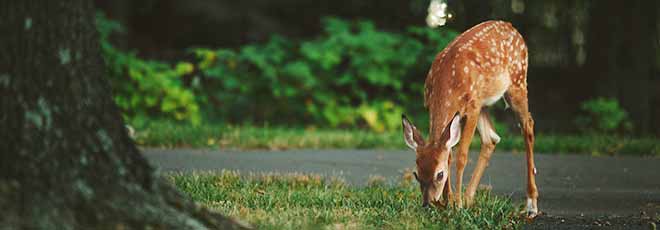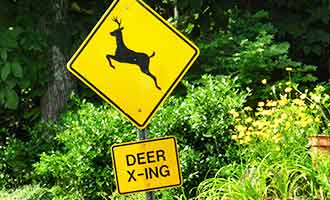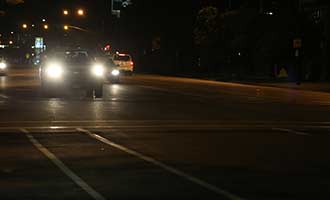
This Year You’re 3 Percent More Likely to Collide with a Deer
According the annual analysis by State Farm Insurance, U.S. drivers are nearly three percent more likely to collide with a deer in the next 12 months than they were last year. State farm estimates that one out of every 169 U.S. motorists will hit a deer over the next year – but that probability more than doubles during the months of October, November and December when deer collisions are most prevalent.
More 2014 State Farm Auto / Deer Collision Facts:
- The national cost per claim average is $3,888, up 13.9 percent from 2013 ($3,414).
- The months a driver is most likely to collide with a deer in the U.S., mostly due to mating and hunting seasons, are October, November and December.
- Ten percent of the country’s deer collisions occur in Pennsylvania (123,941 collisions), though when taking into account the amount of licensed drivers in the state, West Virginia still edges out as number one with a likelihood of 1 in 39 compared to Pennsylvania’s 1 in 71 (second ranked state).
- To see how your state ranked visit https://learningcenter.statefarm.com/safety-2/auto-2/watch-out-for-animals-in-the-road/

Tips to Reduce the Odds of a Car / Deer Collision:
Tips from the Insurance Information Institute on how to reduce the odds of a deer-vehicle collision.
- Keep in mind that deer generally travel in herds — if you see one, there is a strong possibility others are nearby.
- Be aware of posted deer crossing signs. These are placed in active deer crossing areas.
- Deer are most active at night – between 6 and 9 p.m.
- Use high beam headlamps as much as possible at night to illuminate the areas from which deer will enter roadways.
- If a deer collision seems inevitable, attempting to swerve out of the way could cause you to lose control of your vehicle or place you in the path of an oncoming vehicle.
- Don’t rely on car–mounted deer whistles.
- Watch for deer between sunset and midnight, and during pre-dawn hours when they’re most active.
- Slowdown in posted deer-crossing areas.
- If you see one deer, remember that others are probably nearby.
- Use high beams at night in deer territory when there is no oncoming traffic.
- If a deer is frozen in your headlights, honk your horn in a loud, sustained blast.
- Don’t rely on deer whistles or roadside reflectors; they have not been proven effective.
- If you can’t avoid a deer, brake and stay in your lane. Don’t endanger other vehicles.
- If you strike a deer, do not touch the animal. It may harm you or further injure itself.
- Call police immediately if you hit or are hit by a deer.
- Take pictures of the accident scene and vehicle damage for your insurance claim.




